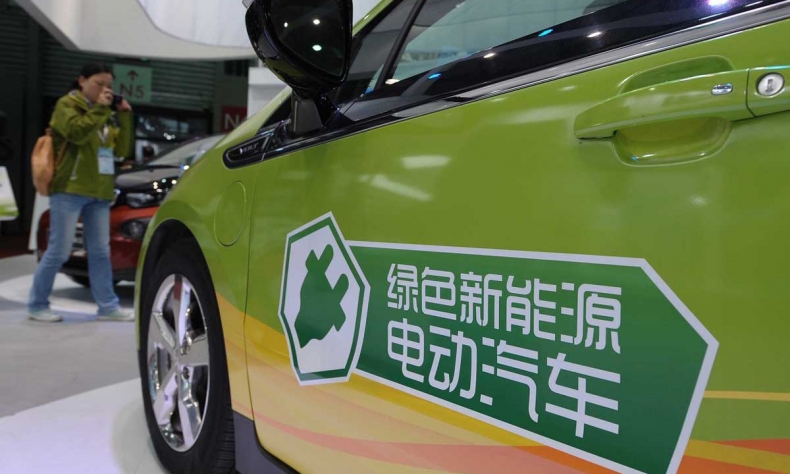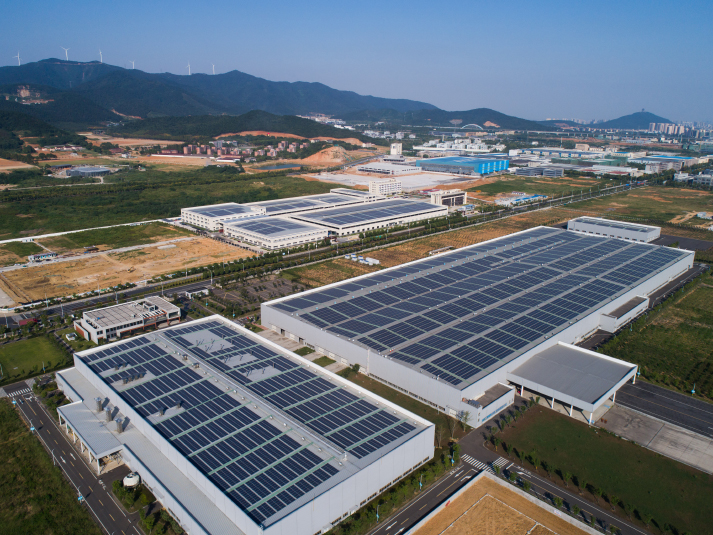
A Cleaner Land
China has made strides in the battle against pollution
Yang Fei, a law enforcement officer in Shenzhen, south China’s Guangdong Province, has a new weapon against polluters: a hand-held device that can test water quality and quickly trace pollutants to their sources.
“Environmental law enforcement requires onsite sampling of water quality. In the past, we had to send the samples to laboratories for testing and then wait at least two to three days for the results before taking any action,” Yang said.
Now, the portable terminals enable officers to swiftly identify suspected polluting enterprises. “Law enforcement efficiency has been greatly improved and costs reduced,” he said.
Yang works with the Shenzhen Ecological Environment Comprehensive Law Enforcement Team under the Shenzhen Ecological Environment Bureau. He shared his experience with the device at a conference on the environment and the Internet, held in Chengdu, southwest China’s Sichuan Province, on September 20-21.

The device, jointly developed by the law enforcement team and a university, uses a combination of big data, Internet and geographical information technologies and a multi-parameter spatial model of water quality in pipeline networks. It has been used in Shenzhen’s environmental law enforcement action codenamed Sword.
China is fighting an arduous battle against pollution, and technology is helping to accelerate its progress. Recent data from the National Bureau of Statistics (NBS) showed that pollution control measures are yielding results and that the ecological environment has been continuously improving.
Environmental change
In China, there is a popular nursery rhyme about a little swallow, which went to a child’s hometown every spring because it found the spring there the most beautiful. The child told the swallow, “This year, it will be more beautiful here. We have built a large factory fitted with new machines. You are welcome to settle down here.”
That song was released in 1957, around the time when China entered a period of rapid industrialization. At the time, Chinese people were looking forward to the prospect of development brought by factories, but were unaware of the looming pollution.
In the three decades after the founding of the People’s Republic of China in 1949, a complete industrial system was established in China, said Wei Jigang, a researcher with the Development Research Center of the State Council. After the launch of reform and opening up in 1978, China continued its rapid development, becoming a huge manufacturing country.
But industrialization and rapid development came with a heavy toll on the environment. With chimneys spewing black smoke, vehicles belching exhaust and pipes discharging dirty water, the spring was not as beautiful as the nursery rhyme depicted. Smog is one of the most salient environmental problems that the public feels strongly about.
Government action
As the environment deteriorated, the government began to feature its protection more prominently on the national agenda. Environmental protection was defined as a function of governments at all levels in 1973, written into the Constitution in 1978 and made a national strategy in 1983, according to a report reviewing China’s environmental protection over the past 70 years released by the NBS in July.
During the period between 2000 and 2005, the concept of scientific development was put forward, and a law promoting clean production was passed in 2002. The government set targets for controlling the emissions of six major pollutants such as sulfur dioxide and chemical oxygen demand.
Despite these efforts, pollution remained a serious problem. In 2005, sulfur dioxide emissions increased 27.8 percent from the 2000 level, according to the NBS.
In 2006, the government began to set binding targets to lower energy consumption per unit of GDP and reduce the emissions of major pollutants. Urban sewage treatment plants were built and desulfurization facilities were installed in coal-fired power plants, while backward production facilities were dismantled. Sewage treatment fees were collected and desulfurization facilities were charged lower electricity prices.
Through these efforts, emissions of sulfur dioxide and chemical oxygen demand went down significantly in 2010; and by 2015, emissions of sulfur dioxide, chemical oxygen demand, ammonia and nitrogen decreased further, according to the NBS.
After the 18th National Congress of the Communist Party of China (CPC) in 2012, environmental protection was given even more priority.
In 2013, the Central Government released the Action Plan for Air Pollution Control and Prevention, which included measures such as closing factories, limiting the number of cars on the road and replacing coal with clean energy. In 2015 and 2016, the government unveiled the Action Plan for Water Pollution Control and Prevention and the Action Plan for Soil Pollution Control and Prevention, respectively, to tackle water and soil pollution.
A system of river and lake chiefs was implemented to keep bodies of water clean by holding local officials responsible for environmental protection. When President Xi Jinping visited the upper and middle reaches of the Yellow River in August and September, respectively, he reiterated the importance of ecological protection and green development.
As a result of these efforts, air and surface water quality has improved. The NBS revealed that in 2018, air quality in 35.8 percent of the 338 cities under monitoring met national standards, 14.2 percentage points higher than the number in 2015. Meanwhile, surface water in 71 percent of the monitored water sections was clean enough to serve as drinking water sources, according to the NBS.
In 2018, the average concentration of PM2.5 in the Beijing-Tianjin-Hebei region, the Yangtze River Delta and the Pearl River Delta dropped by 48 percent, 39 percent and 32 percent, respectively, from 2015 levels. In addition, the average PM2.5 concentration in 338 cities across the country was 22 percent lower than 2015.
International responsibilities
While improving its own environment, China has actively fulfilled its international responsibilities.
It has taken new steps to mitigate climate change. In 2018, China’s carbon dioxide emissions per unit of GDP fell by 45.8 percent compared to 2005, equivalent to a reduction of 5.26 billion tons of carbon dioxide, said Foreign Minister Wang Yi while attending the UN Climate Action Summit at the UN Headquarters in New York City on September 23.
Wang said that last year, non-fossil energy accounted for 14.3 percent of primary energy consumption in China, and forest coverage increased by 4.56 billion cubic meters from 2005 levels. Since 2000, about a quarter of the new greening areas in the world are in China and the country has also been actively promoting the construction of the national carbon emissions trading market, he said.
He also reiterated China’s commitment to fulfilling its obligations under the UN Framework Convention on Climate Change and the Paris Agreement, and making nationally determined contributions.
In addition, China has fulfilled its obligation to reduce ozone depleting substances (ODS) and has so far eliminated about 280,000 tons of ODS, accounting for more than half of the total eliminated in developing countries, said Liu Youbin, spokesperson of the Ministry of Ecology and Environment, at a press conference held by the ministry on September 20.
This year marks the 30th anniversary of China’s signing the Vienna Convention for the Protection of the Ozone Layer. Since then, China has fulfilled the requirements of the convention and the Montreal Protocol on Substances that Deplete the Ozone Layer.
China has cracked down on illegal ODS-related actions with zero tolerance, he said. In 2018, 1,172 enterprises suspected of being involved in the illegal production or use of CFC-11, the chemical in aerosol cans and foam, were investigated and prosecuted according to law; in 2019, control over CFC-11 was further strengthened. Liu said that all 16 enterprises producing carbon tetrachloride, another ODS, as byproducts were monitored 24 hours a day onsite and online, and enterprises producing foam products in 11 provinces and cities have been inspected to prevent them from using ODS.
The Chinese Government will continue to improve its policy and regulatory system in order to fulfill its commitments to phasing out ODS.
Although progress and achievements have been made in environmental protection, there are still many problems and challenges, the NBS said in its report, calling for renewed efforts to fight the war against pollution.
 Facebook
Facebook
 Twitter
Twitter
 Linkedin
Linkedin
 Google +
Google +










